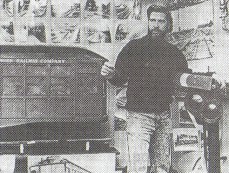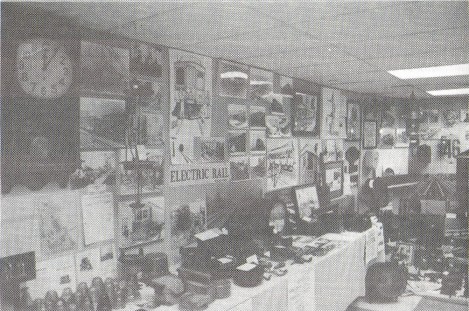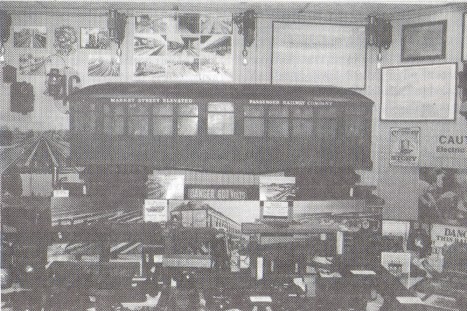1993 Marks Centennial of Third Rail Power
by Warren Speegle
Reprinted from "Crown Jewels of the Wire", January 1992, page 7
Signal Maintainer's Mini-Museum Displayed at Fern Rock
While most young boys dreamed of owning the ultimate train, Warren Speegle's
earliest fixation was on what made the steel wheels move.
A signal maintainer for the Subway-Elevated Division, Speegle has turned a
boyhood interest in electrical third rail equipment, a form of power propulsion
for trains, into a collection worthy of museum display.

Over the past three years he has traveled to transit companies throughout the
country to assemble a collection of electrical third rail hardware that dates
back to 1893. The collection was recently on display at the Fern Rock Training
Center.
"I've always been interested in the electrical field generally and the
electrical history of railroads specifically, so this has been a labor of
love," Speegle said. "I've gotten things from everywhere: Grand
Central Station, subway systems in New York City, Chicago, and Boston, and
transit systems in Newark, and Scranton. I asked transportation companies
rebuilding their infrastructures for whatever they were scrapping."
And these turn-of-the-century relics still work. "I have a signal from
the old Hudson and Manhattan Railroad [now the PATH system] that still works.
And a 1905 tunnel light that was used here under Market Street still lights
up."
Naturally, Speegle has a soft spot for things that are SEPTA. Both the Broad
Street and the Market-Frankford Lines rely on third rail power. "One of the
highlights of my collection is a 10-foot long wooden model of the first
Market-Street Elevated car built at the turn of the century."
Speegle wants to put his collection on the road. "I'd like my display to
travel to other transit authorities. The year 1993 will mark the centennial of
third rail power, and this would be my contribution to the celebration."

This above article was printed in the "SEPTA LINES" in March of
1991 which serves as the employee newsletter of the Southeastern Pennsylvania
Transportation Authority. The THIRD-RAIL-DISPLAY traveled to Philadelphia,
Pennsylvania on two separate occasions in 1991. The first was the Fern Rock
School of the SEPTA (December-January, 1991) for one month and again June 9th
through 14th at the Philadelphia Suburban Station for the American Public
Transit Association Convention hosted by SEPTA.
This was a great opportunity to
show public officials, delegates of transit systems, equipment suppliers, etc.
the role that insulators have played, and continue to serve in the Electric
Railway Industry. From the photos taken at the Philadelphia Suburban Station
exhibit, you can see that the whole room is full of insulators, third rail devices,
historic
photographs, telegraph, telephone, power insulators -- and early tunnel lights
(1905). Hundreds of items put together to show the story of 100 years of the
Electric Third Rail 1893-1993.
All of this equipment was moved from Tamaqua, PA
to Philadelphia (87 miles) and set-up in a space of 3 days -- just in time for the
opening of the convention.
This display has come a long way since its beginning
at the National Insulator Convention in Allentown in 1989. Many more insulators
have been added -- hundreds of miles traveled, and nice people along the way who
helped make the display possible.
Although setting this display up was at times
difficult and hard work, the best reward is seeing everything together, out of
boxes and storage, put into a display which hundreds of people could see, and
touch, and experience a small part of the Great Age of Electricity. .

The third rail system of current distribution has been used for many years.
The earliest records dating back to 1893. Years of and experiment have developed
many various types of insulators -- the early ones being made of wood.
Stoneware, semi-porcelain and reconstructed granite were used with varying degrees
of
success. Then the porcelain third rail insulators were developed for this most
severe service. Today porcelain is being replaced by plastic and fiberglass.

| 